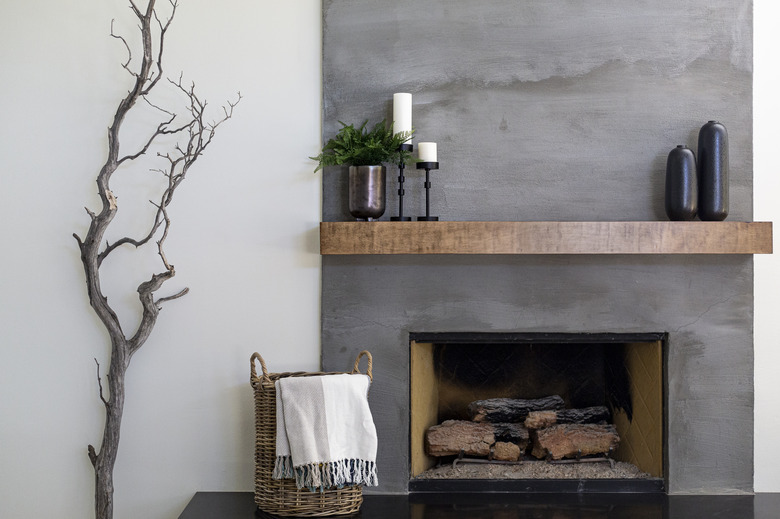What Kind Of Paint To Use On The Inside Of A Fireplace
We may receive a commission on purchases made from links.
There is comfort in the glow of a warm fire on a cold winter's night. The flames are even brighter against a contrasting black background. To enhance the experience, apply a coat of paint to the inside of the fireplace every two years. This process requires a nontoxic and heat-resistant paint formulated for the specific firebox material, whether brick or metal.
Brick-Lined Wood-Burning Fireplaces
Brick-Lined Wood-Burning Fireplaces
The firebox of a wood-burning fireplace is usually lined with bricks. In this type of application, a paint must be capable of concealing creosote and soot stains and of withstanding extreme temperatures without peeling, blistering or cracking. In general, use a flat black, heat-resistant paint that will withstand temperatures up to 1,200 degrees Fahrenheit. Such paints may contain silicone resins.
Before you begin, prepare the brick surface by scrubbing with a stiff brush and a solution of dishwashing liquid. Rinse, then follow with a solution of 1/2 cup trisodium phosphate (TSP) dissolved into 1 gallon of water to remove the soot inside the firebox. Rinse, then repeat as needed to clean the bricks. Allow the fireplace to dry for at least 24 hours before painting the brick firebox.
Metal-Lined Wood-Burning Fireplaces
Metal-Lined Wood-Burning Fireplaces
Some newer fireboxes that burn wood are metal-lined. This type of fireplace requires a heat-resistant paint with a high adhesion capability designed to stick to metal surfaces with various substrates. There are some coatings that require too much equipment and protective gear for the do-it-yourselfer to use safely.
Spray or brush-on heat-resistant stove paint is often used on wood-burning stoves and inserts. This product is best suited to the amateur and does not require special tools for application. Scrub the metal firebox with a degreaser, then prime and paint.
The Gas Fireplace
The Gas Fireplace
Creosote and ash are not present in gas fireplaces. Most of these metal-lined appliances suffer paint loss due to repeated use and require touch-ups to regain the pristine black found in a new firebox. Take time to prepare the metal surfaces for painting by cleaning with a degreaser and sanding smooth before applying primer and paint.
You can use a heat-resistant paint formulated for use on metal surfaces. Alternately, gas appliance touch-up paint has the proper formula for this application and is available at retailers selling gas fireplaces and inserts.
Other Fireplace Products
Other Fireplace Products
Other fireplace products are available to keep the outside of your fireplace looking new. Look in stores featuring fireplace equipment for brick patching compound, hearth cleaner, formulations for the cleaning of fireplace glass and grates as well as paste and liquid polishes to enhance the shine on fireplace doors.
Important Safety Precautions
Important Safety Precautions
Whatever the product used, the homeowner must be aware of the hazards involved in fireplace restoration. Paint should never be applied to a warm surface. The firebox should be free of ash and soot and stone cold before any product is applied. Reading the label and following the manufacturer's instructions on the can will ensure that the proper product is safely applied and ensure a good final result.
Don safety goggles, rubber gloves, a face mask and protective clothing before cleaning or painting a fireplace or firebox to prevent contact with soot, ash or creosote that may remain on the bricks or in the chimney flue. Also protect the surrounding area with newspapers, brown kraft paper or plastic sheeting. Tape securely around the edges to prevent overspray.
